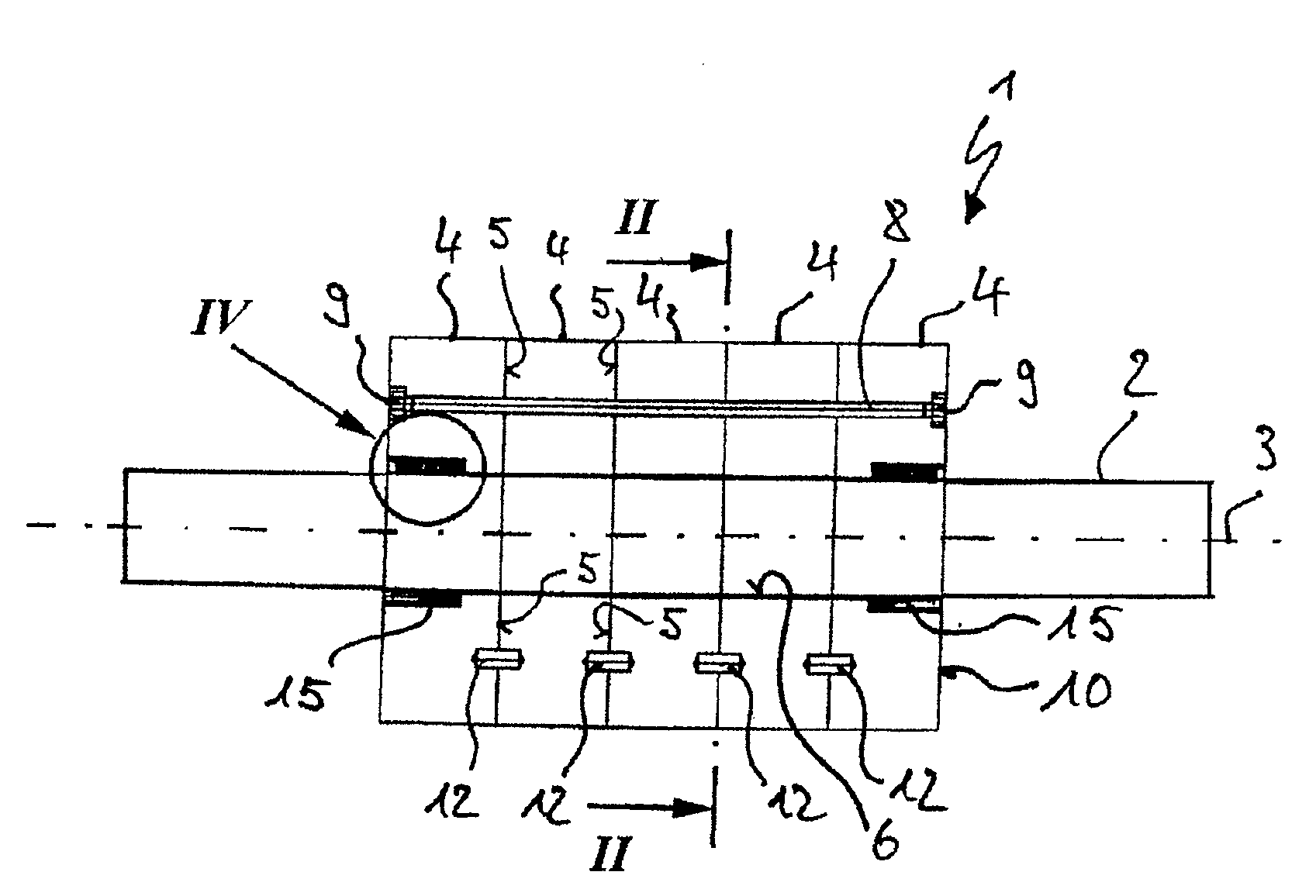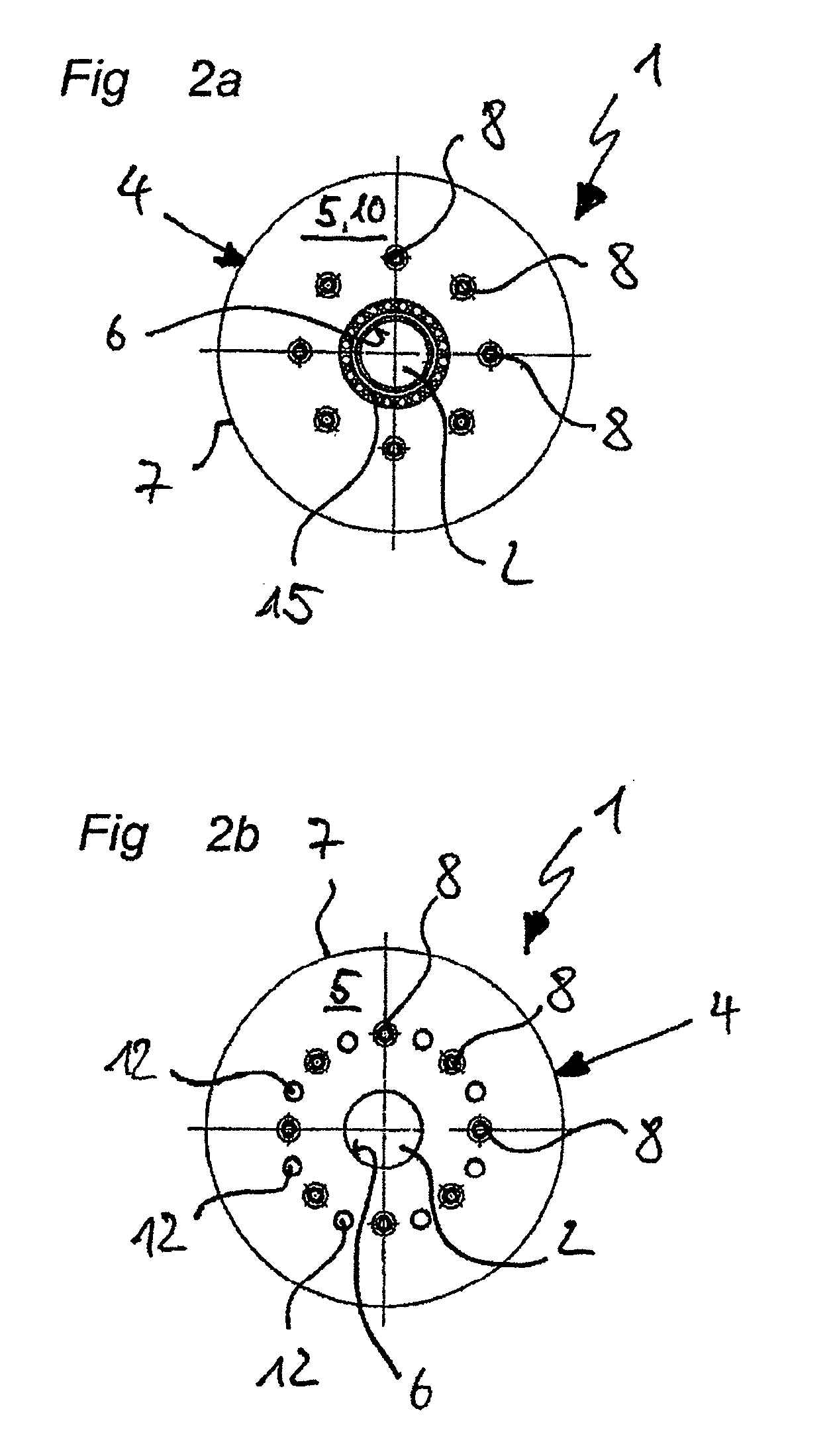Rotor and device for the comminution of input material
a rotor and input material technology, applied in the field of rotors for the comminution of input materials, can solve the problems of inability to achieve the effect of increasing increasing the rotor length without achieving an increase in reducing the effective working area of grinding, etc., to achieve the effect of improving the rotor and the device, compact design, and precise grinding
- Summary
- Abstract
- Description
- Claims
- Application Information
AI Technical Summary
Benefits of technology
Problems solved by technology
Method used
Image
Examples
Embodiment Construction
[0036]FIGS. 1a, 2a and 2b show a first embodiment of a rotor 1 in accordance with the invention, which for example is suitable for accomplishing the size reduction of input materials of a wide range of types within a shredder or a cutting mill. A device suitable for the use of rotor 1 is, for example, described in DE 102006056542 A1, which corresponds to U.S. Publication No. 20080135658, the entire content of which is incorporated herein by reference.
[0037]The rotor 1 shown in FIG. 1a has a continuous drive shaft 2 with a longitudinal axis 3, the free ends of which are intended to be retained rotatably in axial bearings of the device, not shown. In the operation of the device in accordance with the invention, the drive shaft 2 is impinged with a driving torque to generate a rotational motion. In the center region on the drive shaft 2, in a coaxial arrangement, five successive rotor discs 4 are placed, the front faces 5 of which are in contact with one another.
[0038]As is apparent fr...
PUM
 Login to View More
Login to View More Abstract
Description
Claims
Application Information
 Login to View More
Login to View More - R&D
- Intellectual Property
- Life Sciences
- Materials
- Tech Scout
- Unparalleled Data Quality
- Higher Quality Content
- 60% Fewer Hallucinations
Browse by: Latest US Patents, China's latest patents, Technical Efficacy Thesaurus, Application Domain, Technology Topic, Popular Technical Reports.
© 2025 PatSnap. All rights reserved.Legal|Privacy policy|Modern Slavery Act Transparency Statement|Sitemap|About US| Contact US: help@patsnap.com



